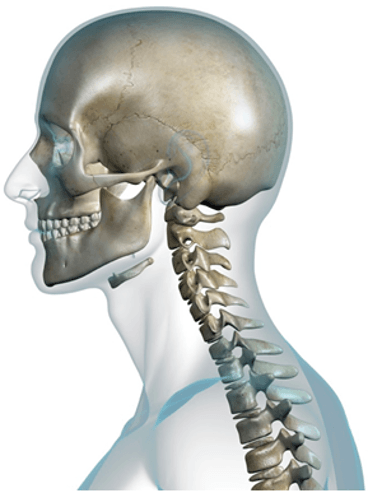Musculoskeletal Holistic Dentistry
Muscle Dysfunctions and Dentistry
The head postures atop the atlas (C1) and axis (C2) with its odontoid process. The atlas and odontoid process are the first two cervical vertebrae. The head rotates in all dimensions atop the axis, with the cranial base resting on top of the axis. Forty-two muscles are attached to the skull. Short ones from the cervical vertebrae to the base of the skull and long ones from the sacrum up to the base of the skull.
As the lower jaw opens and closes the head pivots on the axis requiring coordination of many of these 42 muscles. Improper lower jaw resting position, bite and/or closing angulation leads to instability of many of these 42 muscles.
Stress affects every individual differently. These effects could be physical or psychological. Some people develop skin rashes, digestive problems, fatigue, sleep disorders, or even no observable physical manifestations. Alternatively, the effects could manifest as a mood disorder. The stress from an accommodated bite disorder occurs in the same way.
There are individuals who have severely worn dentitions and no musculoskeletal pathologies. There are also patients who have minimal wear and exhibit severe musculoskeletal disorders.
These disorders can be seen in both head position and body posture. Scott Udoff DMD PC practices functional dentistry and would like to help patients better understand these conditions and how they can be alleviated.
Contact our office for holistic dentistry near Rockland County, NY if you’re interested in more information.



Share On: